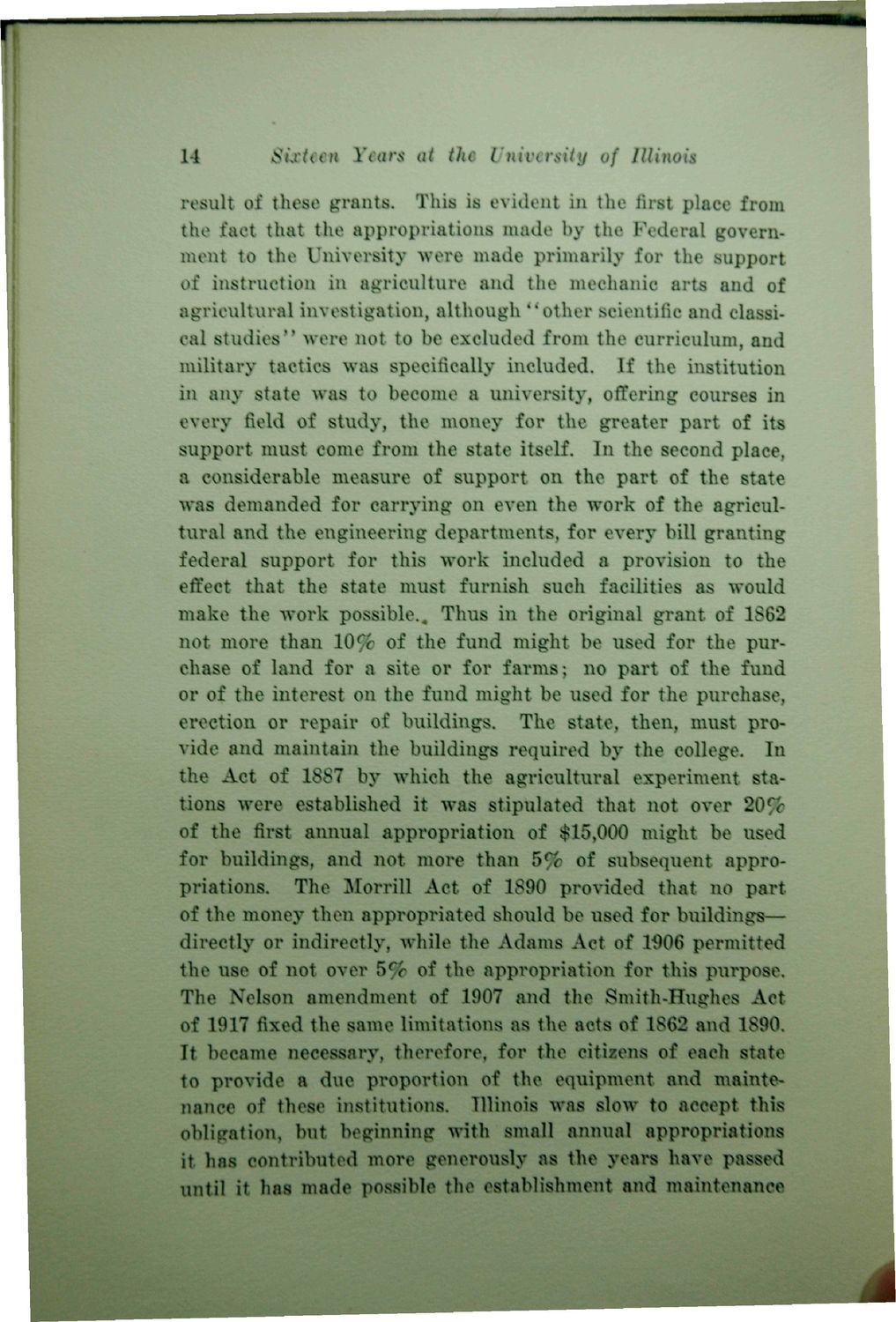| |
| |
Caption: Book - 16 Years (Edmund James)
This is a reduced-resolution page image for fast online browsing.

EXTRACTED TEXT FROM PAGE:
14 Sixteen Years of the University of Illinois result of these grants. This is evident in the first place from the fact that the appropriations made by the Federal government to the University were made primarily for the support of instruction in agriculture and the mechanic arts and of agricultural investigation, although "other scientific and classical studies'' were not to be excluded from the curriculum, and military tactics was specifically included. If the institution in any state was to become a university, offering courses in every field of study, the money for the greater part of its support must come from the state itself. In the second place, a considerable measure of support on the part of the state was demanded for carrying on even the work of the agricultural and the engineering departments, for every bill granting federal support for this work included a provision to the effect that the state must furnish such facilities as would make the work possible.. Thus in the original grant of 1S62 not more than 10% of the fund might be used for the purchase of land for a site or for farms; no part of the fund or of the interest on the fund might be used for the purchase, erection or repair of buildings. The state, then, must provide and maintain the buildings required by the college. In the Act of 1887 by which the agricultural experiment stations were established it was stipulated that not over 20% of the first annual appropriation of $15,000 might be used for buildings, and not more than 5% of subsequent appropriations. The Morrill Act of 1890 provided that no part of the money then appropriated should be used for buildings— directly or indirectly, while the Adams Act of 1906 permitted the use of not over 5% of the appropriation for this purpose. The Nelson amendment of 1907 and the Smith-Hughes Act of 1917 fixed the same limitations as the acts of 1862 and 1890. It became necessary, therefore, for the citizens of each state to provide a due proportion of the equipment and maintenance of these institutions. Illinois was slow to accept this obligation, but beginning with small annual appropriations it has contributed more generously as the years have passed nnt.il it has made possible the establishment and maintenance
| |